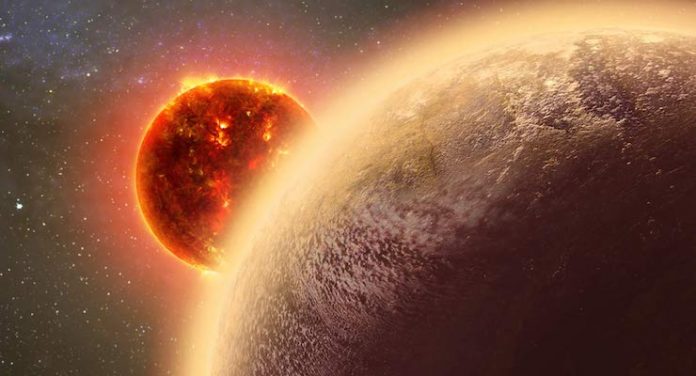A study published in the Astronomical Journal claims scientists for the first time ever have detected an atmosphere around an Earth-like planet known as GJ 1132b.
However, planet GJ 1132b, which is 1.4 times the size of Earth, has a surface temperature of 370C (698F), meaning any form of life as we know it would find it difficult to survive.
“To my knowledge the hottest temperature that life has been able to survive on Earth is 120C and that’s far cooler than this planet [GJ 1132b],” said Dr John Southworth, the lead researcher from the UK’s Keele University, according to the BBC.
Scientists, however, claimed in a paper published on Thursday in the Astronomical Journal that the planet could be a “water world,” as it has an atmosphere made of either methane or water, or an amalgamation of both.
“One possibility is that it is a ‘water world’ with an atmosphere of hot steam,” said Southworth.
The planet, which is 39 light years away from Earth, orbits a low-mass star. Such stars tend to have magnetic fields that thrash out x-rays and ultraviolet light that can destroy atmosphere molecules.
The finding is significant because as low-mass stars are very common in the universe, the fact that the planet’s atmosphere manages to bare its star’s radiation makes it more likely life will be found beyond our solar system.
“The fact that we have detected an atmosphere around GJ 1132b means this kind of planet is indeed capable of retaining an atmosphere for billions of years, even whilst being bombarded by the high-energy photons from their host stars,” Southworth told Wired.
“What we have shown is that planets around low mass stars can have atmospheres and because there are so many of those in the universe, it makes it that much more likely that one might have life,” the scientist said, according to the BBC.
Southworth called the finding an “important step in the right direction.”
The planet, which lies in the Vela constellation in the southern hemisphere, was first discovered in 2015 by Drake Deming, an astronomer at the University of Maryland, who hailed it as “arguably the most important planet ever found outside the solar system.”
GJ 1132b, which orbits a star dimmer and cooler than the sun, was observed through a telescope at the European Southern Observatory in Chile.
Astronomers found that the planet blocks out some of its star’s light as it moves in front of it, a useful feature in detecting transiting planets.
“It makes the star look a little bit fainter – and it’s actually a very good way of finding transiting planets – it’s how this one was found,” said Southworth.















